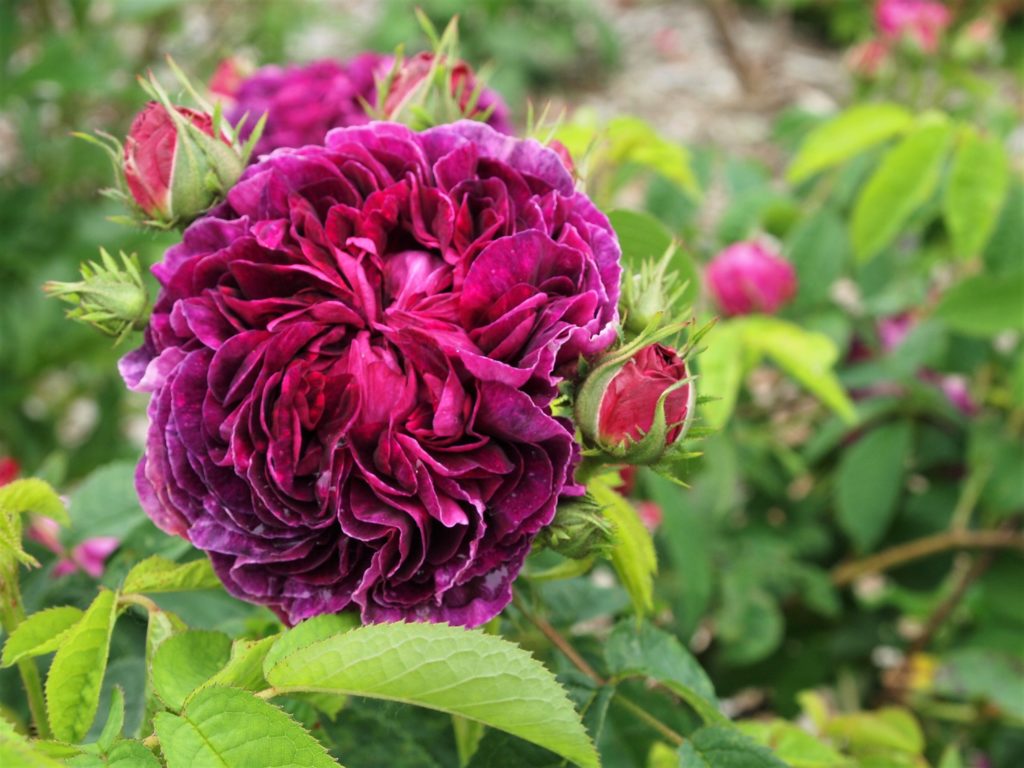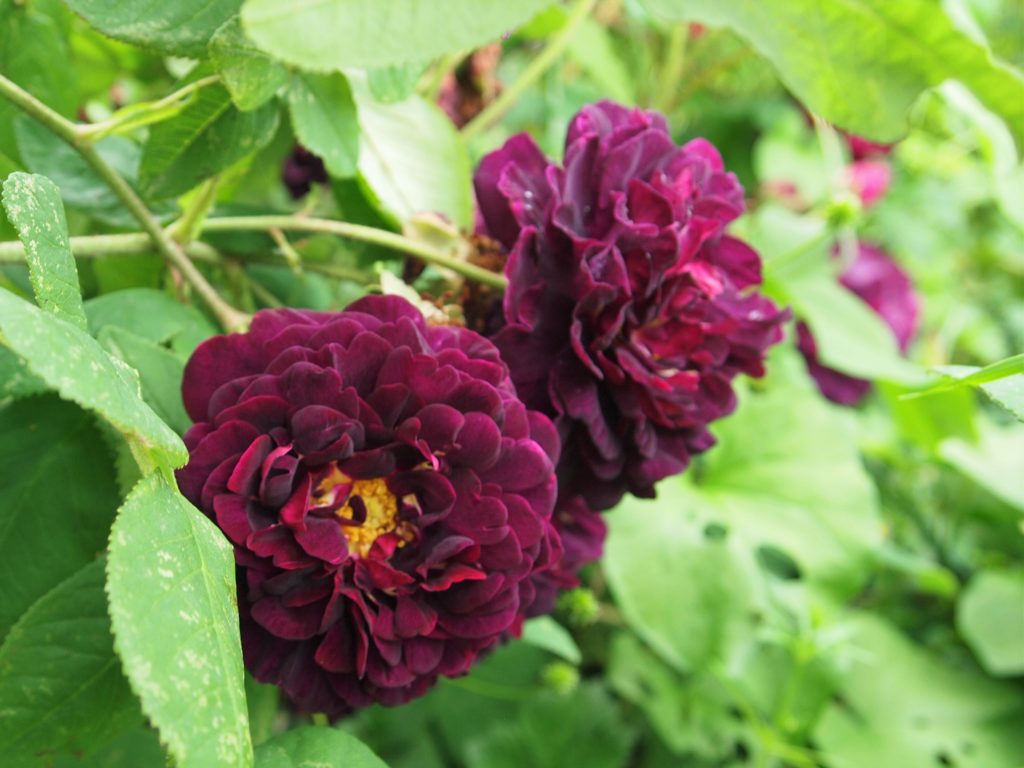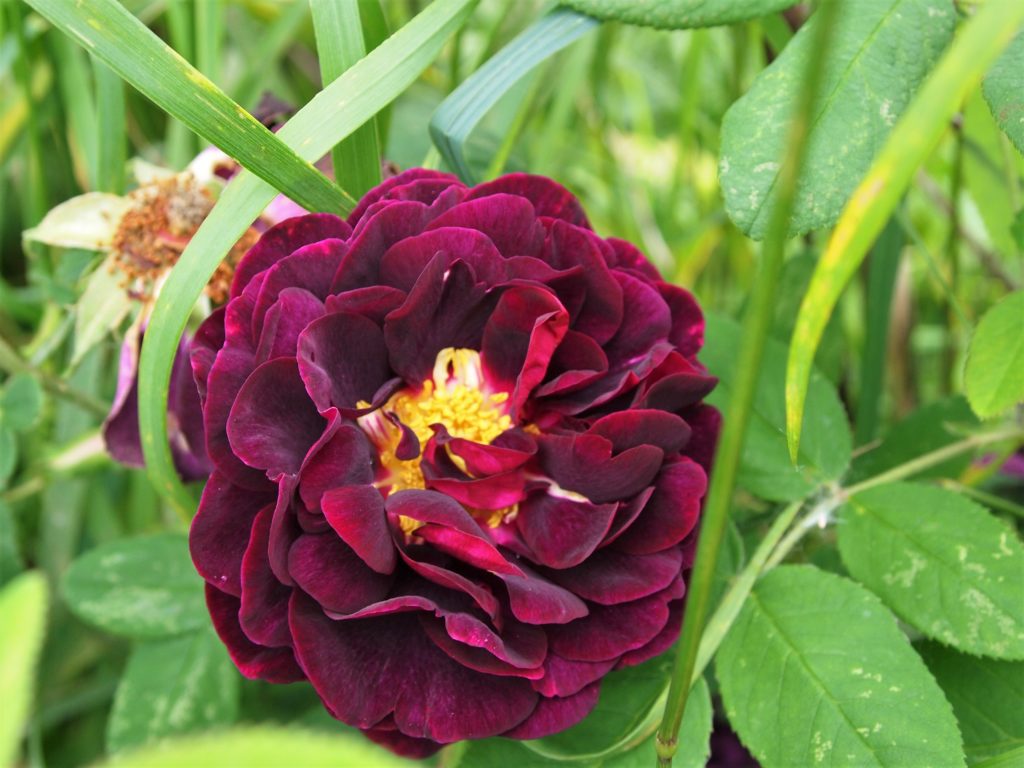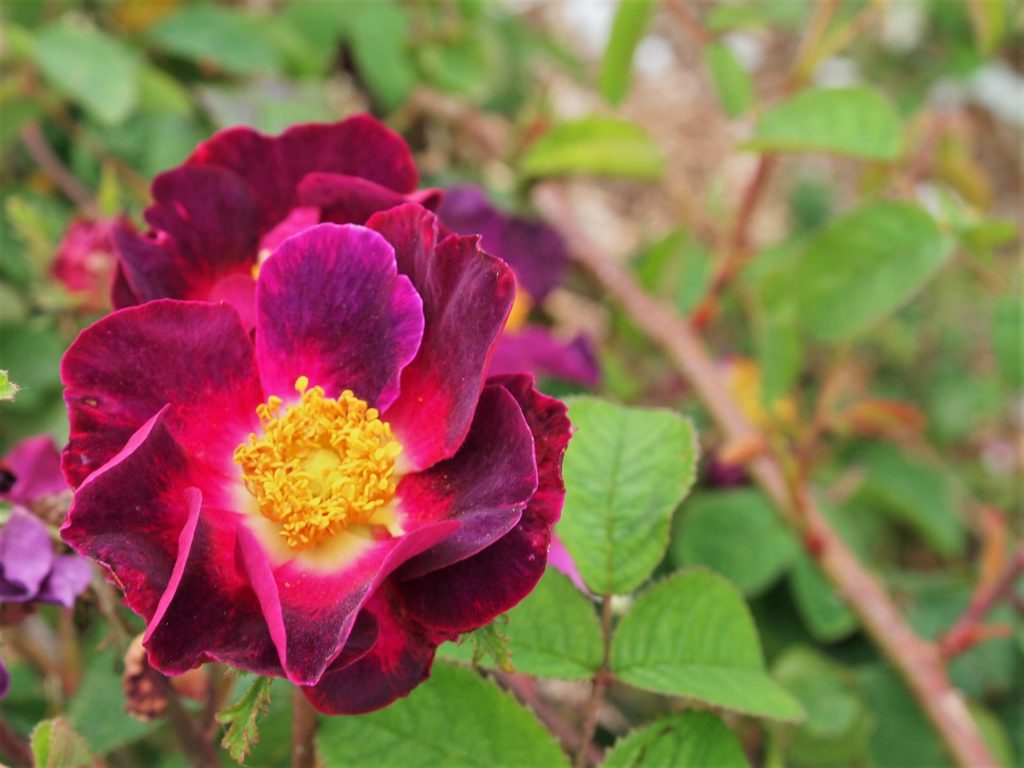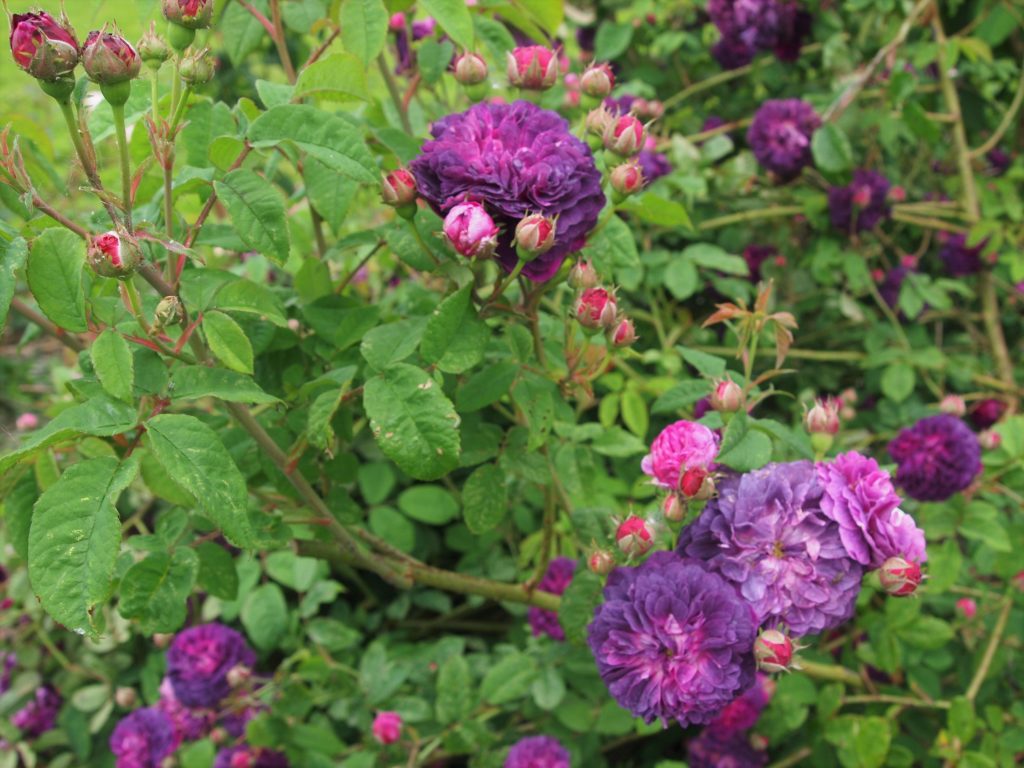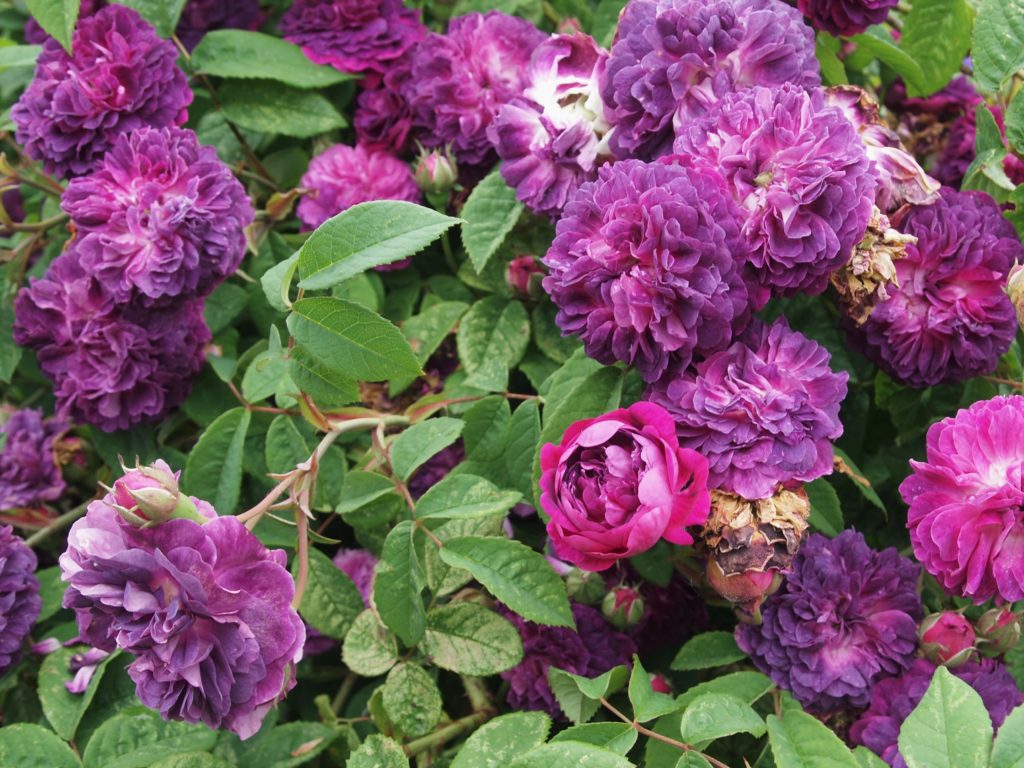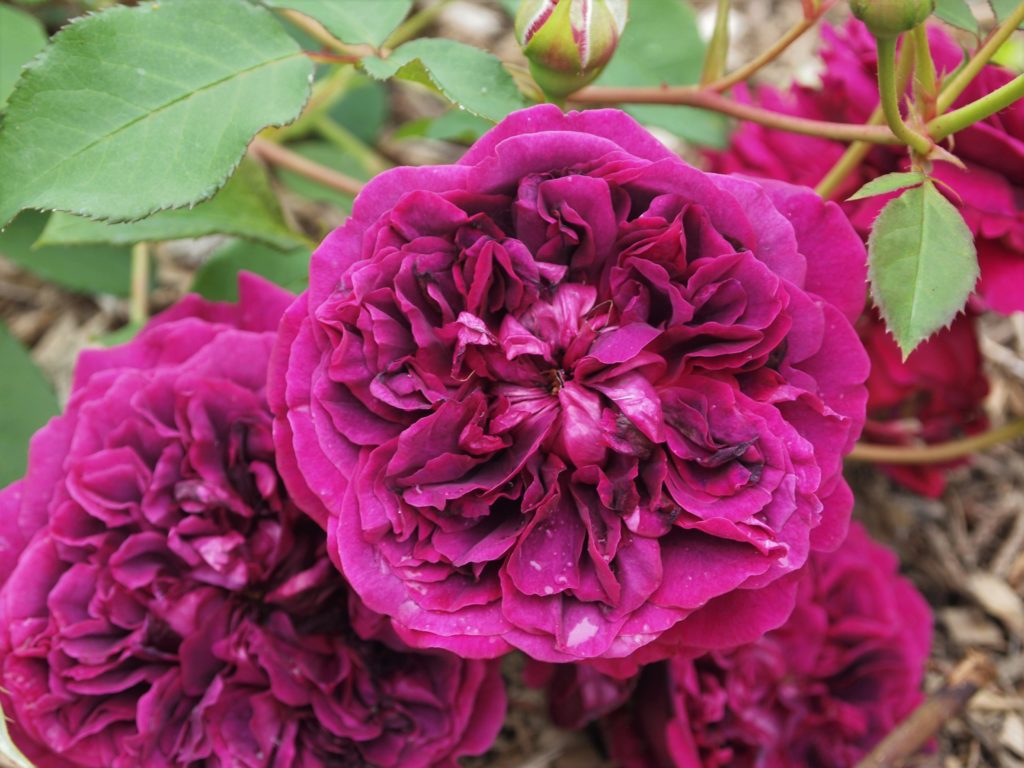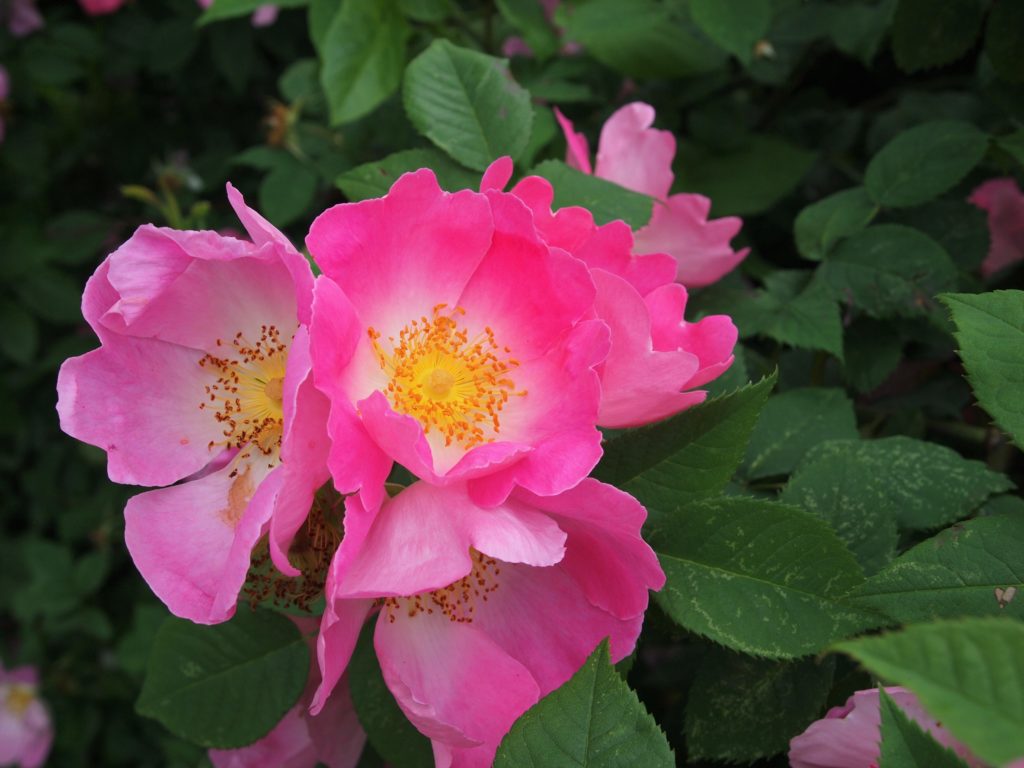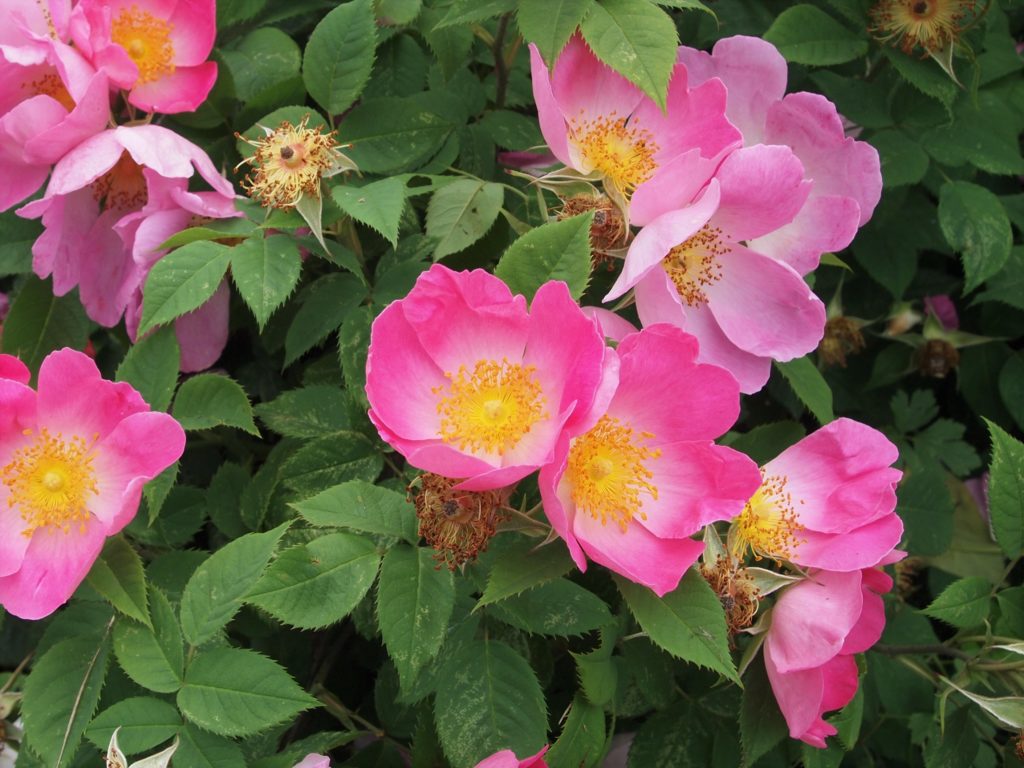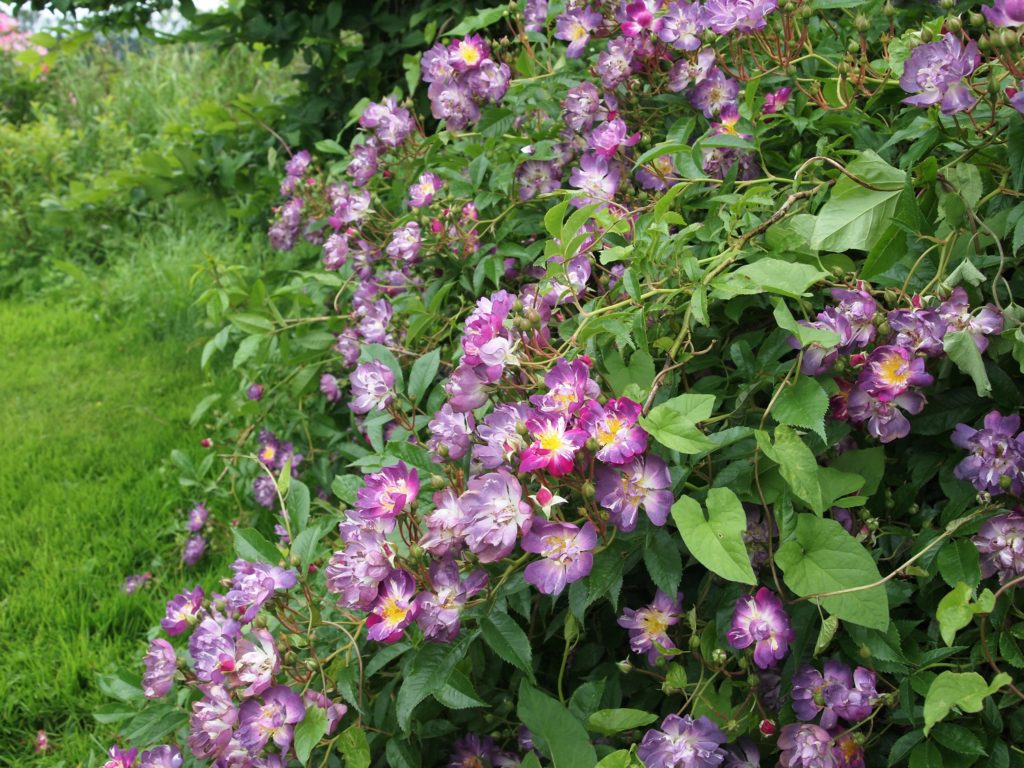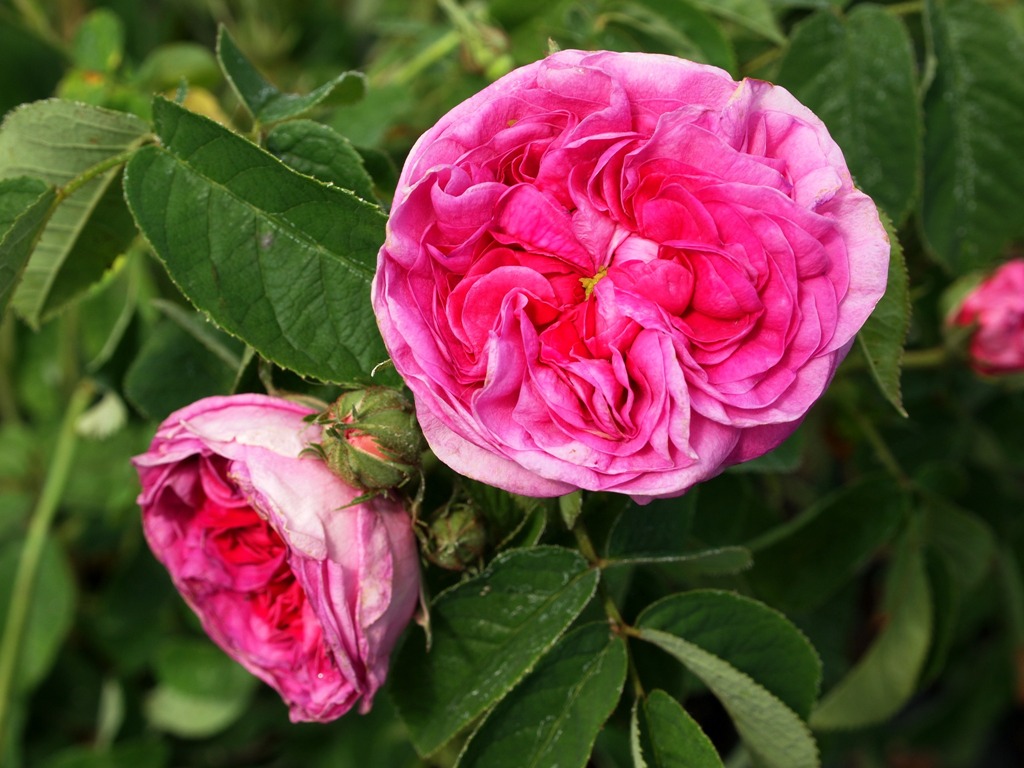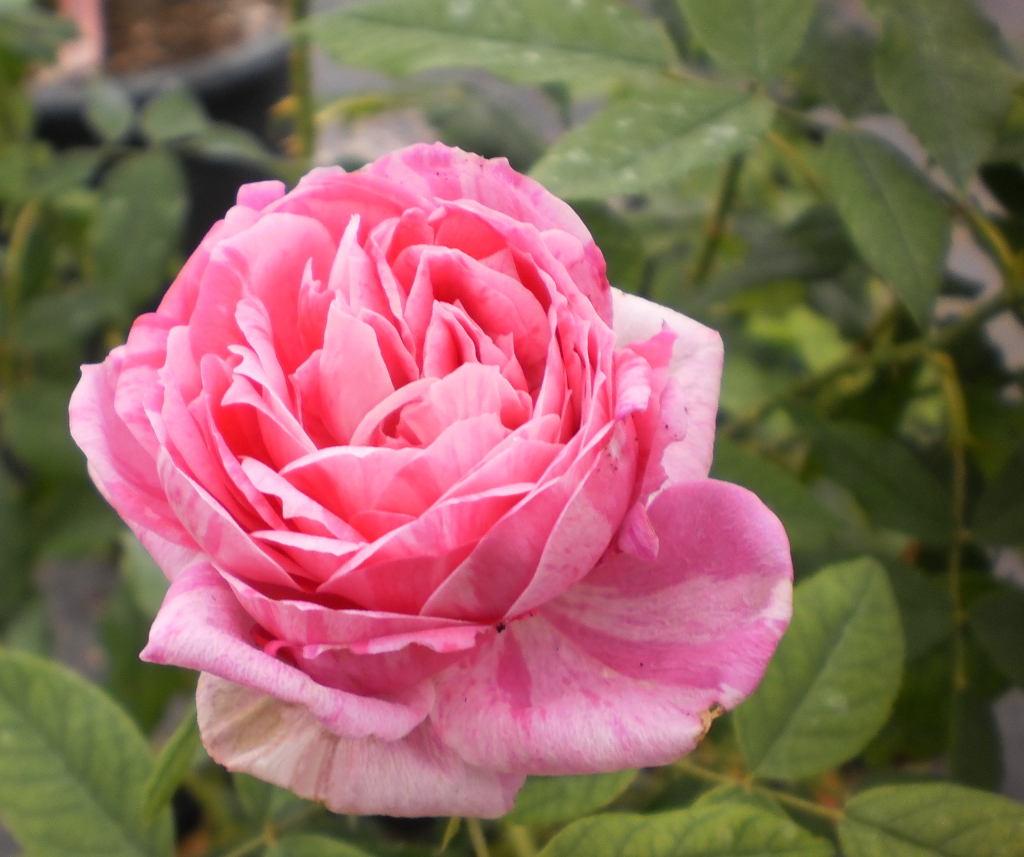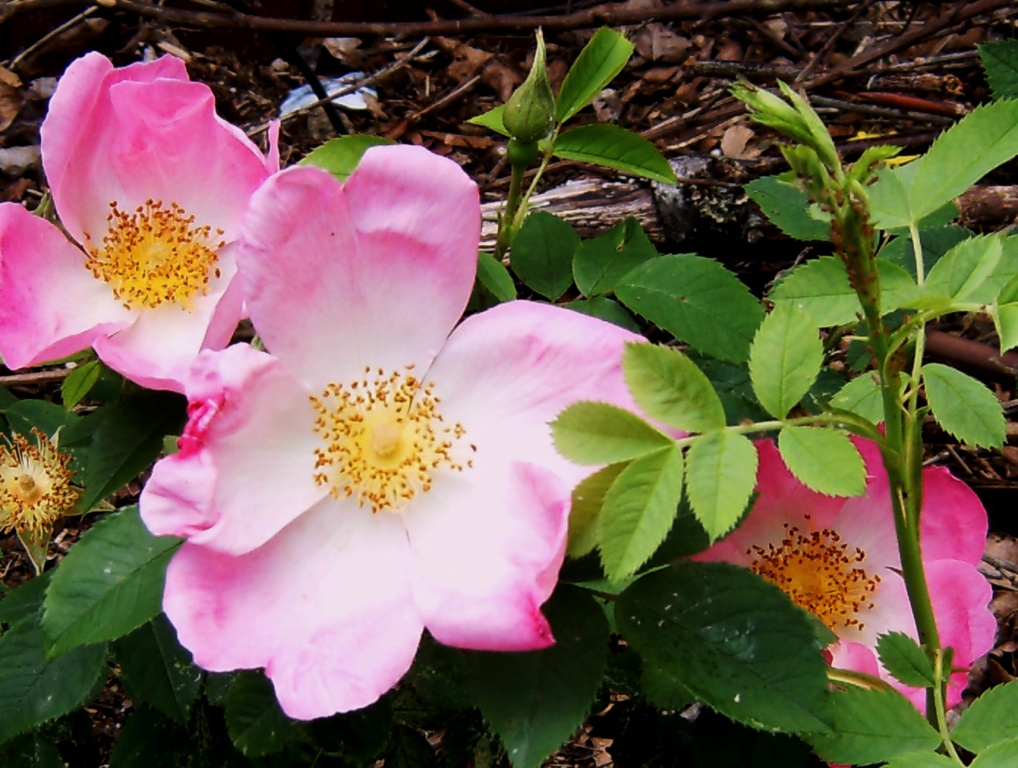Continuing my Youtube series on the old garden roses, this on covers the Gallicas. This class of roses was so dominant in Europe in the middle ages, there were literally hundreds of cultivars. Treasured for its close-to-red color, breeding focused on high petal counts, deep shades of pink and purple, and novelty traits like stripes and mottling.
I also mention in the video that the Gallica roses are of a low, suckering habit. Some, like R. gallica officinalis can form a bit of a thicket in the garden if left to wander. A few gardeners have come to me in distress when their gallica “takes over” a perennial bed. I’m sympathetic, of course, but I assure you the rose didn’t dominate that landscape in a single year – if attended to, the suckering can be managed (or wisely relocated to a more appropriate location).
This video runs a bit longer then the others, just because there’s a lot of material to cover. Next up: the Albas.

